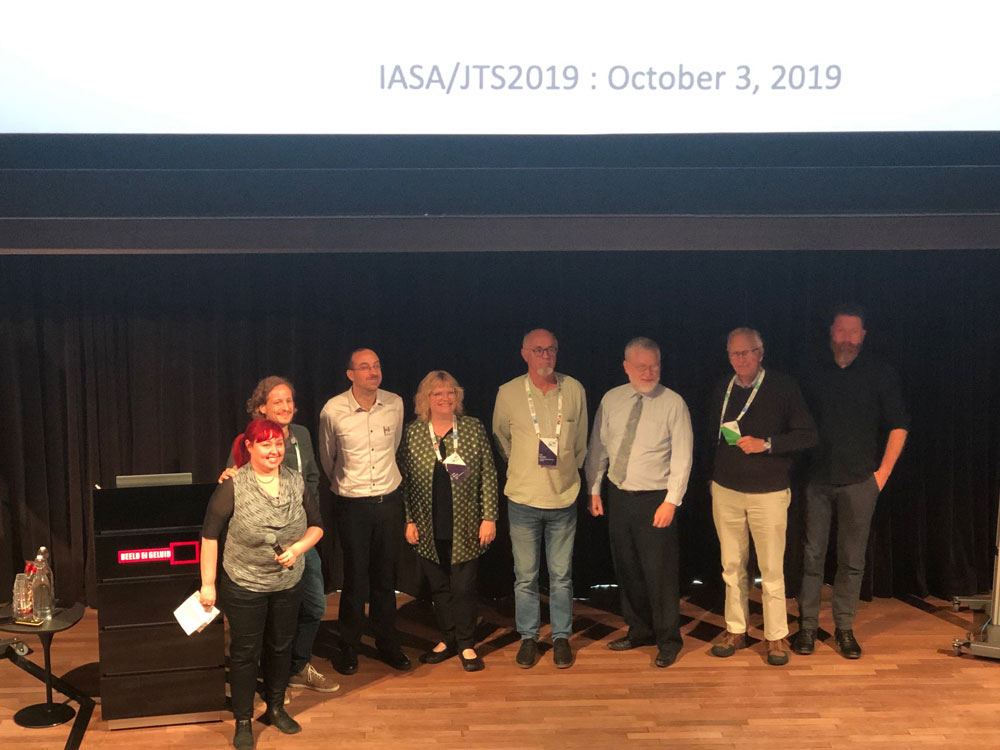
The Joint Technical Symposium (JTS) is ‘an international scientific and technical symposium dealing with matters of particular importance to audiovisual archives and archivists’. Every few years, the symposium is organised by various organisations that form the Coordinating Council of Audiovisual Archives Association (CCAAA). The 10th JTS, 3–5 October 2019, was held in conjunction with the International Association of Sound and Audiovisual Archives’ (IASA) 50th Conference at the Netherlands Institute for Sound and Vision.
I was grateful to be a recipient of a grant from the JTS 2019 travel grants committee and was able to participate in JTS and the joint workshops. However, I was unable to attend most of the IASA Conference due to time constraints.
There were so many interesting presentations and sessions and this short article will not cover them all. I have included the online collaborative notes of both IASA Conference and JTS at the end for anyone who is interested.
The buzzword for JTS seemed to be AI, artificial intelligence. In the keynote, Professor Larson from Radboud University Nijmegen addressed how AI-based solutions rely on archives to improve the efficiency and accuracy to succeed. Without the support of archives, AI overlooks certain types of data and this in turn results in archives finding AI less useful. AI-based solutions can benefit from direction from archives.
Other presentations showed how AI could be used in digital film restoration to remove dust and scratches in archival footage; and automating metadata extraction for archives. Overall, AI seems to describe machine learning and that is still dependent on people refining it, especially in the early stages.
There were many other interesting presentations such as historical film colours; multispectral film scanning; using technology to determine motion-picture film condition; using specific format structures to identify the provenance of digital video files; AMP metadata platform for mass description; and exploration of myths, queries and neat things to try in audiovisual presentation, to name a few.
Similarly, the workshops were excellent. I was especially interested in the open source tool, ‘embARC’ for batch embedding and correcting metadata for DPX file headers. DPX sequences is one way of digitising motion-picture films.
There was also an overview session of IASA-TC 06 ‘Guidelines for the Preservation of Video Recordings’, which would be a good guide for many organisations. In the works is also TC 07 for preservation of born-digital video. There are so many digital video formats and encodings, with new ones created constantly. With this in mind the working group for TC 07 has asked for the involvement from as many people as possible. Do participate and invite your colleagues working with digital media to join in too. I have included the following from the TC 07 working group:
Planning for the drafting of the IASA-TC 07 – Born-digital video by the international community is underway. The COVID-19 pandemic has impacted on our timeframes due to other work and personal commitments. Once the TC 07 small working group has settled on a collaborative editing platform, this will be made available to everyone to contribute. If you are interested in getting involved at this stage, please do send an email to: borndigitalvideo@gmail.com
Links to collaborative notes of JTS and IASA 50th Conference: